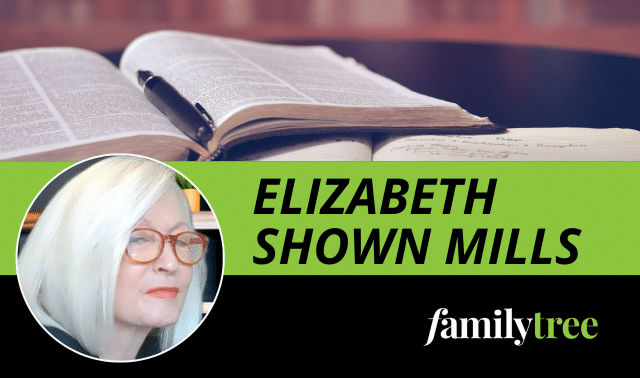Sign up for the Family Tree Newsletter! Plus, you’ll receive our 10 Essential Genealogy Research Forms PDF as a special thank you.
Get Your Free Genealogy Forms
"*" indicates required fields

Your ancestors were more than just names and dates. They were real people who experienced life in the contexts of their families and communities. To see them in these contexts, try creating personal, family and historical timelines.
These tools can help you organize, plan and evaluate your research by showing at a glance what you’ve learned, what information is missing and where you could turn next. Read on to learn how you can create timelines for your family.
Personal timelines
As you begin to focus your research on an individual, create a chronological profile of that person’s life that you can expand as you learn more. You’ll find a template for these timelines in The Unpuzzling Your Past Workbook (Betterway Books).
ADVERTISEMENT
Before you find a lot of information on that person, you might want to create a timeline on your computer. A spreadsheet or a table in a word processing document provides unlimited space and can be updated easily. My preferred format has four columns:
Date
Write the date of each event in the ancestor’s life in chronological order.
Age
Record the person’s age at the time of each event. When you don’t have a specific birth date, censuses and other records can help you narrow the possibilities. Use the abbreviation c or ca (from the Latin circa, meaning “about”) to show an estimated age—for example, c 37 (about 37).
ADVERTISEMENT
This column will keep you alert to errors and discrepancies—such as a child being born two years before her mother, or a boy enlisting in the army at age 4. If a census reports an incorrect age, record the reported age in the events column, not the age column.
Event and location
Include any information you uncover about the ancestor, such as birth and death, religious milestones, education, employment, military service, marriage(s) and land transactions. If you have questions about specific details, use qualifiers such as likely and probably to explain your uncertainty (for example, “born April 6, probably in New York”). An event description can be as brief as “born somewhere in Alabama,” or it can be several sentences telling a family story. Recording the place is important because you’ll want to look for additional documents in each locality. Remember that an important genealogy strategy is to use the “known,” including places, to work toward the “unknown” family facts.
Documentation
Citing your sources is essential. Entries in this column can be full or abbreviated citations. For example, the full citation for Elizabeth Croom’s estimated birth date of 1808-1809 could read, “1850 US census, roll 230, Caddo Parish, Louisiana, p. 358, family 54, household of Isaac Croom (including Elizabeth, age 41).” An abbreviated citation could read, “1850 census, Caddo Parish, La., p. 358, fam. 54, showing Elizabeth, age 41.” If you do abbreviate the citation, be sure to include the full documentation elsewhere in your notes.
When you list every event you’ve identified in a person’s life, you see in one place what you’ve learned, which sources provided the information, which questions remain and where discrepancies need to be resolved. As you plan your research, the profile helps you concentrate on even the smallest details. (Remember that if you include information from undocumented family histories—paper, electronic or online—you must research them to determine their accuracy.)
As soon as I print out a timeline, I underline and italicize questions and ideas for future investigation. Consider creating such a timeline for both of your parents. What you don’t know about them might surprise you. After my mother died, I created a timeline of her life and was amazed to see probably, possibly and check sprinkled throughout the document, which immediately became a useful research checklist.
ADVERTISEMENT




